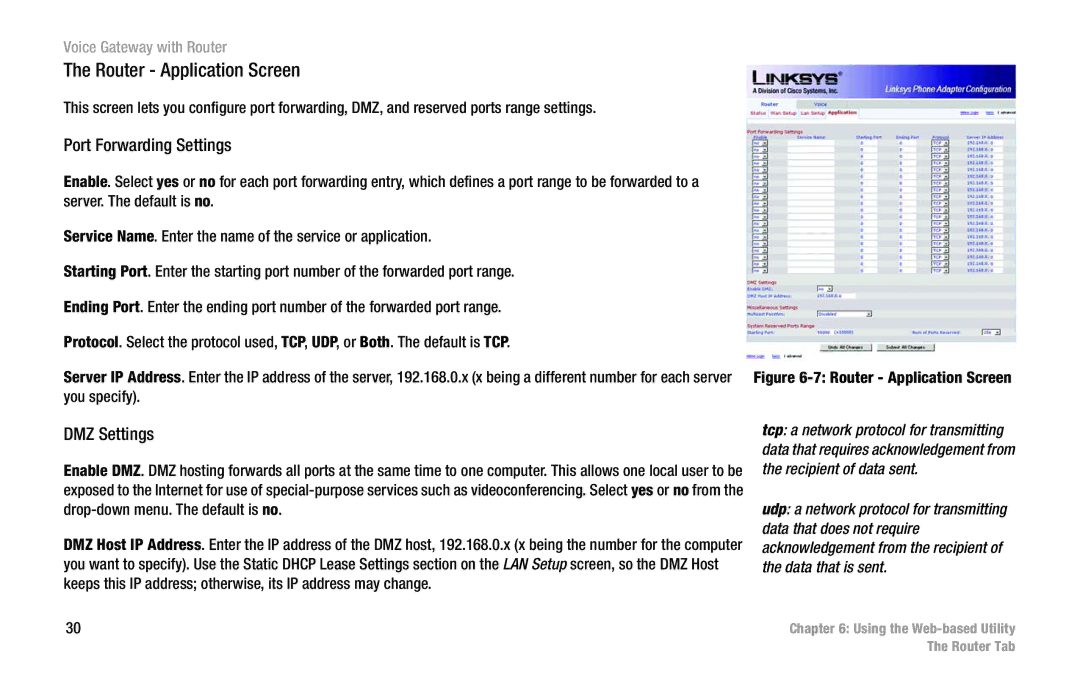
Voice Gateway with Router
The Router - Application Screen
This screen lets you configure port forwarding, DMZ, and reserved ports range settings.
Port Forwarding Settings
Enable. Select yes or no for each port forwarding entry, which defines a port range to be forwarded to a server. The default is no.
Service Name. Enter the name of the service or application.
Starting Port. Enter the starting port number of the forwarded port range.
Ending Port. Enter the ending port number of the forwarded port range.
Protocol. Select the protocol used, TCP, UDP, or Both. The default is TCP.
Server IP Address. Enter the IP address of the server, 192.168.0.x (x being a different number for each server you specify).
DMZ Settings
Enable DMZ. DMZ hosting forwards all ports at the same time to one computer. This allows one local user to be exposed to the Internet for use of
DMZ Host IP Address. Enter the IP address of the DMZ host, 192.168.0.x (x being the number for the computer you want to specify). Use the Static DHCP Lease Settings section on the LAN Setup screen, so the DMZ Host keeps this IP address; otherwise, its IP address may change.
30
Figure 6-7: Router - Application Screen
tcp: a network protocol for transmitting data that requires acknowledgement from the recipient of data sent.
udp: a network protocol for transmitting data that does not require acknowledgement from the recipient of the data that is sent.
Chapter 6: Using the
